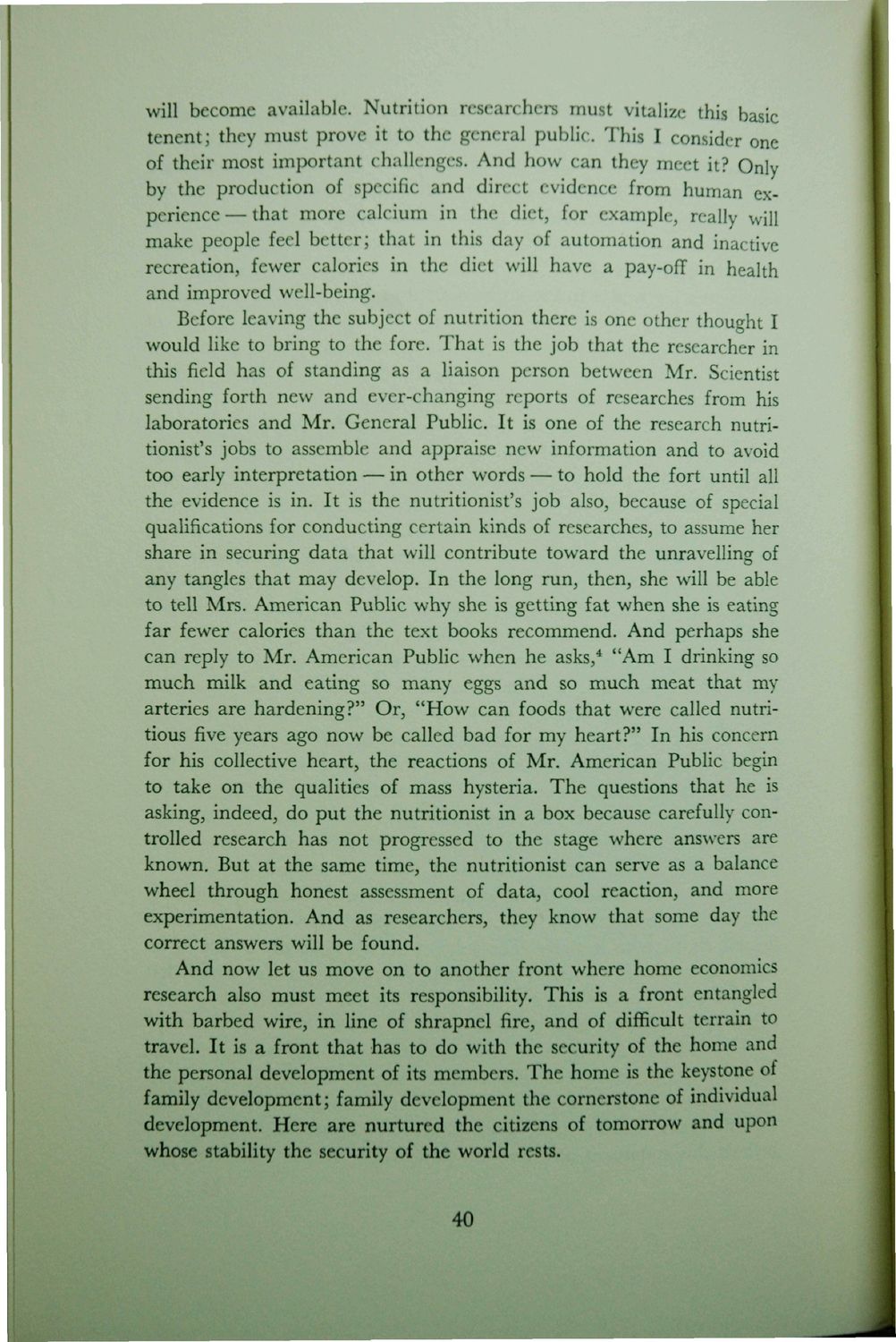| |
| |
Caption: Dedication - Home Economics - Challenge of Home Economics
This is a reduced-resolution page image for fast online browsing.

EXTRACTED TEXT FROM PAGE:
will become available. Nutrition researchers must vitalize this basic tenent; they must prove it to the general public. This I consider one of their most important challenges. And how can they meet it? Only by the production of specific and direct evidence from human experience— that more calcium in the diet, for example, really will make people feel better; that in this day of automation and inactive recreation, fewer calories in the diet will have a pay-off in health and improved well-being. Before leaving the subject of nutrition there is one other thought I would like to bring to the fore. That is the job that the researcher in this field has of standing as a liaison person between Mr. Scientist sending forth new and ever-changing reports of researches from his laboratories and Mr. General Public. It is one of the research nutritionist's jobs to assemble and appraise new information and to avoid too early interpretation — in other words — to hold the fort until all the evidence is in. It is the nutritionist's job also, because of special qualifications for conducting certain kinds of researches, to assume her share in securing data that will contribute toward the unravelling of any tangles that may develop. In the long run, then, she will be able to tell Mrs. American Public why she is getting fat when she is eating far fewer calories than the text books recommend. And perhaps she can reply to Mr. American Public when he asks,4 "Am I drinking so much milk and eating so many eggs and so much meat that my arteries are hardening?" Or, "How can foods that were called nutritious five years ago now be called bad for my heart?" In his concern for his collective heart, the reactions of Mr. American Public begin to take on the qualities of mass hysteria. The questions that he is asking, indeed, do put the nutritionist in a box because carefully controlled research has not progressed to the stage where answers are known. But at the same time, the nutritionist can serve as a balance wheel through honest assessment of data, cool reaction, and more experimentation. And as researchers, they know that some day the correct answers will be found. And now let us move on to another front where home economics research also must meet its responsibility. This is a front entangled with barbed wire, in line of shrapnel fire, and of difficult terrain to travel. It is a front that has to do with the security of the home and the personal development of its members. The home is the keystone of family development; family development the cornerstone of individual development. Here are nurtured the citizens of tomorrow and upon whose stability the security of the world rests. 40
| |